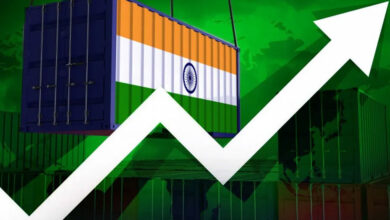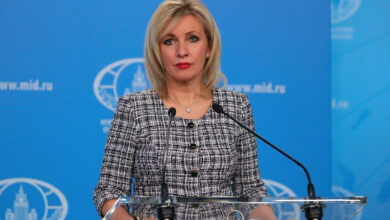UN revises India’s 2024 economic growth projection upwards to nearly 7%, India remains world’s fastest growing large economy
By R Anil Kumar
-
The United Nations updated its earlier projections on May 16, predicting 6.9% and 6.6% growth in India’s economy in 2024 and 2025, respectively. The report states that strong public investment and solid private consumption will be the main drivers of development. The report highlighted that consumer price inflation in India is projected to decrease from 5.6% in 2023 to 4.5% in 2024
-
The 6.9 per cent economic growth projections for India in the mid-year update is an upward revision from the 6.2 per cent GDP forecast made by the UN in January this year
-
India’s government remains committed to gradually reduce the fiscal deficit, while seeking to increase capital investment
-
South Asia’s economic outlook is expected to remain strong, supported by a robust performance of India’s economy

United Nations, May 16. The United Nations has revised upwards India’s growth projections for 2024, with the country’s economy now forecast to expand by close to seven per cent this year, mainly driven by strong public investment and resilient private consumption.
The World Economic Situation and Prospects as of mid-2024, released on May 16, said, India’s economy is forecast to expand by 6.9 per cent in 2024 and 6.6 per cent in 2025, mainly driven by strong public investment and resilient private consumption.
Although subdued external demand will continue to weigh on merchandise export growth, pharmaceuticals and chemicals exports are expected to expand strongly.
The 6.9 per cent economic growth projections for India in the mid-year update is an upward revision from the 6.2 per cent GDP forecast made by the UN in January this year.
The UN World Economic Situation and Prospects (WESP) 2024 report that was launched in January had said that growth in India was projected to reach 6.2 per cent in 2024, amid robust domestic demand and strong growth in the manufacturing and services sectors. The projection in January for India’s GDP growth for 2025 remains unchanged at 6.6 per cent in the latest assessment of the economic situation.
The update said that consumer price inflation in India is projected to decelerate from 5.6 per cent in 2023 to 4.5 per cent in 2024, staying within the central bank’s two to six per cent medium-term target range.
Similarly, inflation rates in other South Asian countries declined in 2023 and are expected to decelerate further in 2024, ranging from 2.2 per cent in the Maldives to 33.6 per cent in Iran. Despite some moderation, food prices remained elevated in the first quarter of 2024, especially in Bangladesh and India.
In India, labour market indicators have also improved amid robust growth and higher labour force participation, it said. India’s government remains committed to gradually reduce the fiscal deficit, while seeking to increase capital investment.
India’s economic growth has been characterized as ‘very robust’ by a UN expert, who also noted that the country is attracting more foreign investment as Western companies shift their focus away from China.

“India is also benefiting from more investments coming into India from other western sources as less and less foreign investment is going into China, western investment is going into China. India has become an alternative investment source or destination for many western companies. I think that is also benefiting India, “said Hamid Rashid, chief of the global economic monitoring branch at the UN department of economic and social affairs.
South Asia’s economic outlook is expected to remain strong, supported by a robust performance of India’s economy and a slight recovery in Pakistan and Sri Lanka. Regional GDP is projected to grow by 5.8 per cent in 2024 (an upward revision of 0.6 percentage points since January) and 5.7 per cent in 2025, below the 6.2 per cent recorded in 2023.
However, still tight financial conditions and fiscal and external imbalances will continue to weigh on South Asia’s growth performance. In addition, potential increases in energy prices amid geopolitical tensions and the ongoing disruption in the Red Sea pose a risk to the regional economic outlook, it said.





